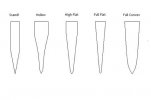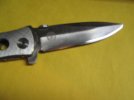- Joined
- Mar 27, 2009
- Messages
- 336
I am ordering a bushcraft dozier and would like your input on which grind you all prefer. Flat or scandi? I will be using the knife for batoning, carving, food prep, small game processing and basically anything we all us a knife for.
Thoughts???
Thoughts???






